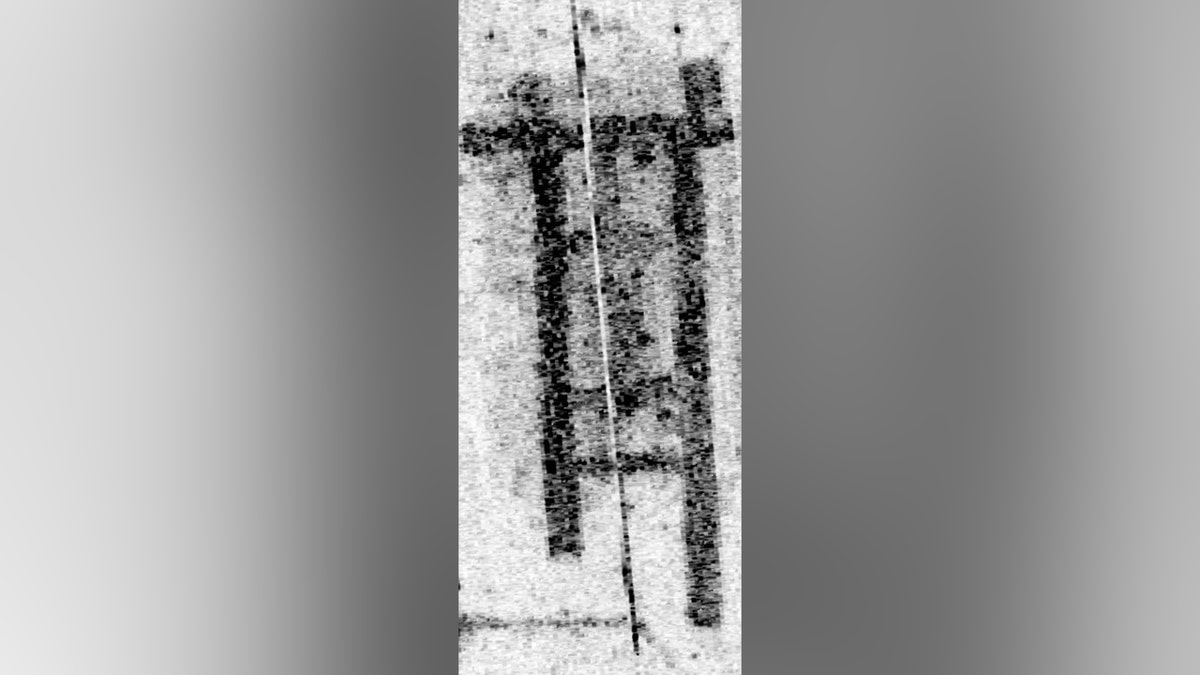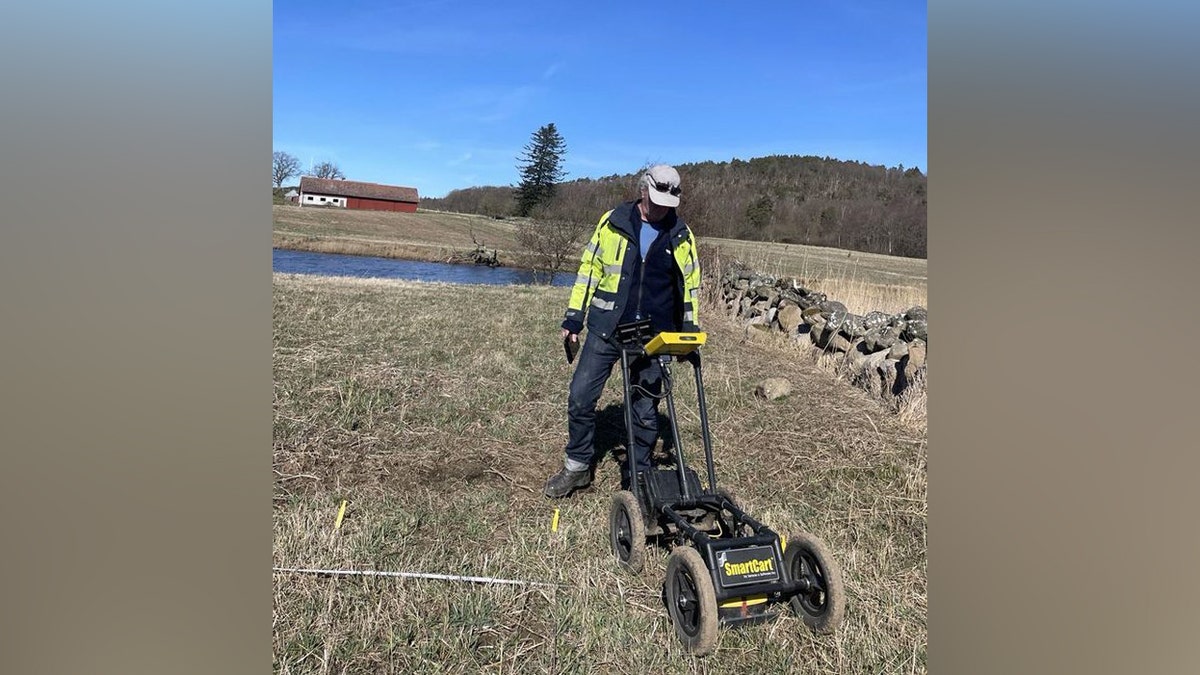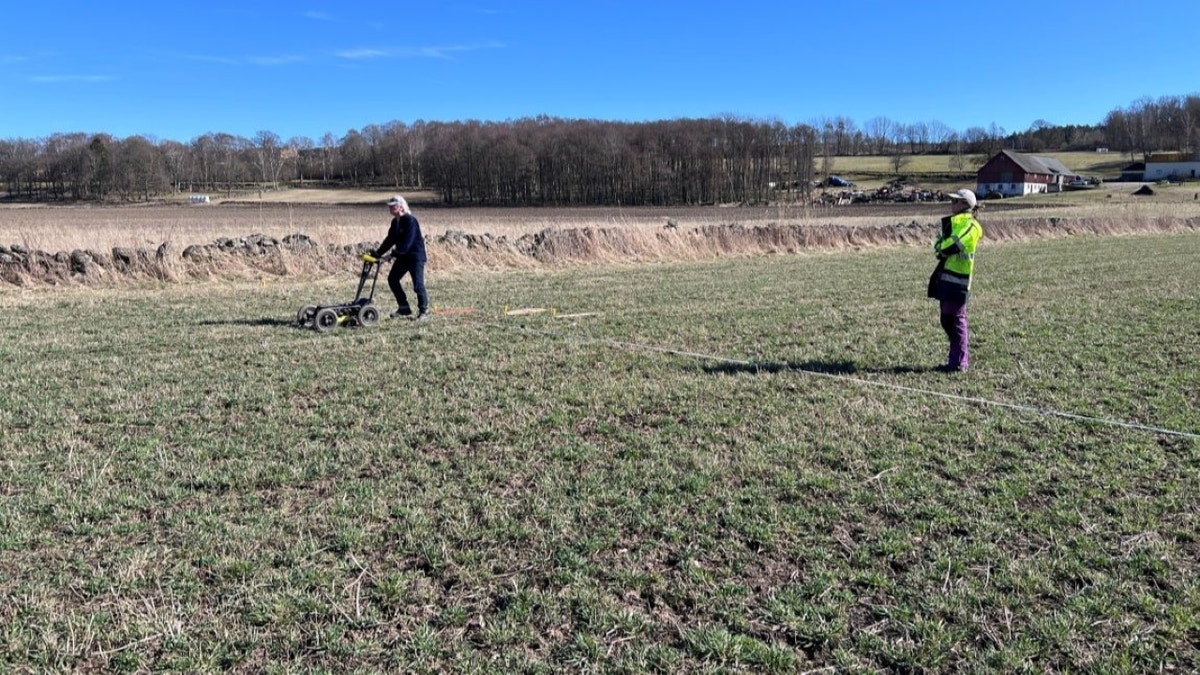
A history buff with a metal detector recently led archaeologists to the site of a medieval monastery – all thanks to a strange symbol spotted on an old map.
Arkeologerna, an archaeological organization affiliated with the Swedish government, announced the discovery this month. The remains of the monastery were found in a field in Derome, in southwest Sweden.
In a statement translated from Swedish to English, Arkeologerna credited hobbyist Göran Bengtsson with pinpointing the site.
ARCHAEOLOGISTS MAKE GRIM DISCOVERY AFTER FINDING ANCIENT ROMAN BUILDINGS
While studying 18th-century maps, Bengtsson noticed a strange rectangle — and brought himself to the site. A surveyor marked the location as “Klosterkullen,” or “monastery hill,” on a 1760 map.
After an alert from Bengtsson, archaeologists headed out to the location to use ground-penetrating radar (GPR) to scope out the site. GPR can show things hidden in the ground — and it revealed the walls of “probable” monastery ruins.

A history enthusiast’s map study led to the discovery of a likely medieval monastery in Sweden, according to local officials. (Arkeologerna)
Archaeologist Bengt Westergaard said the find came as a total surprise to him.
“I have worked as an archaeologist for 40 years, and this is something unique,” Westergaard said.
He added, “I have never seen anything like it; the walls were very clearly visible.”
“I have never seen anything like it.”
The weather conditions helped archaeologists, too. Bengtsson found traces of the monastery on a dry summer day.
“When the ground is dry, something called crop marks can form, and these walls are very visible above ground,” he explained.

Bengtsson noticed a perplexing symbol while he was studying 18th-century maps. (Arkeologerna)
“When using ground-penetrating radar, any structures below ground appear as dark spots, and here there was a significant anomaly.”
Archaeologists uncovered walls which are roughly 6.5 feet thick, as well as other facets of the building.
For more Lifestyle articles, visit foxnews.com/lifestyle
Experts believe the walls were remains of pillar foundations.
“It is the eastern wing and dormitory we see,” Arkeologerna’s statement added. “It is not certain that more was built; they may have started building the church and then stopped.”

The ruins are almost certainly proof of a medieval monastery, experts said, but more research will be conducted. (Arkeologerna)
“We won’t know until we investigate the site further.”
Dating back to the late 1100s, the monastery might be the original site of Ås Abbey, a large monastery managed by the Cistercian religious order.
CLICK HERE TO SIGN UP FOR OUR LIFESTYLE NEWSLETTER
“Ås … was later moved in the 13th century,” the statement continued. “In a letter from a meeting in 1243, the then-abbot applied to move Ås monastery.”
Sweden, a Nordic country rich in history, has been home to several historical discoveries in the past year.

The Swedish site may be the original site of Ås Abbey before its 13th century relocation, according to experts. (Arkeologerna)
Last spring, archaeologists uncovered a 12th century grave during a dig – and found buried treasure along with it.
CLICK HERE TO GET THE FOX NEWS APP
This year, Arkeologerna announced the discovery of an “unusual” Viking-era coffin dating back over 1,100 years.